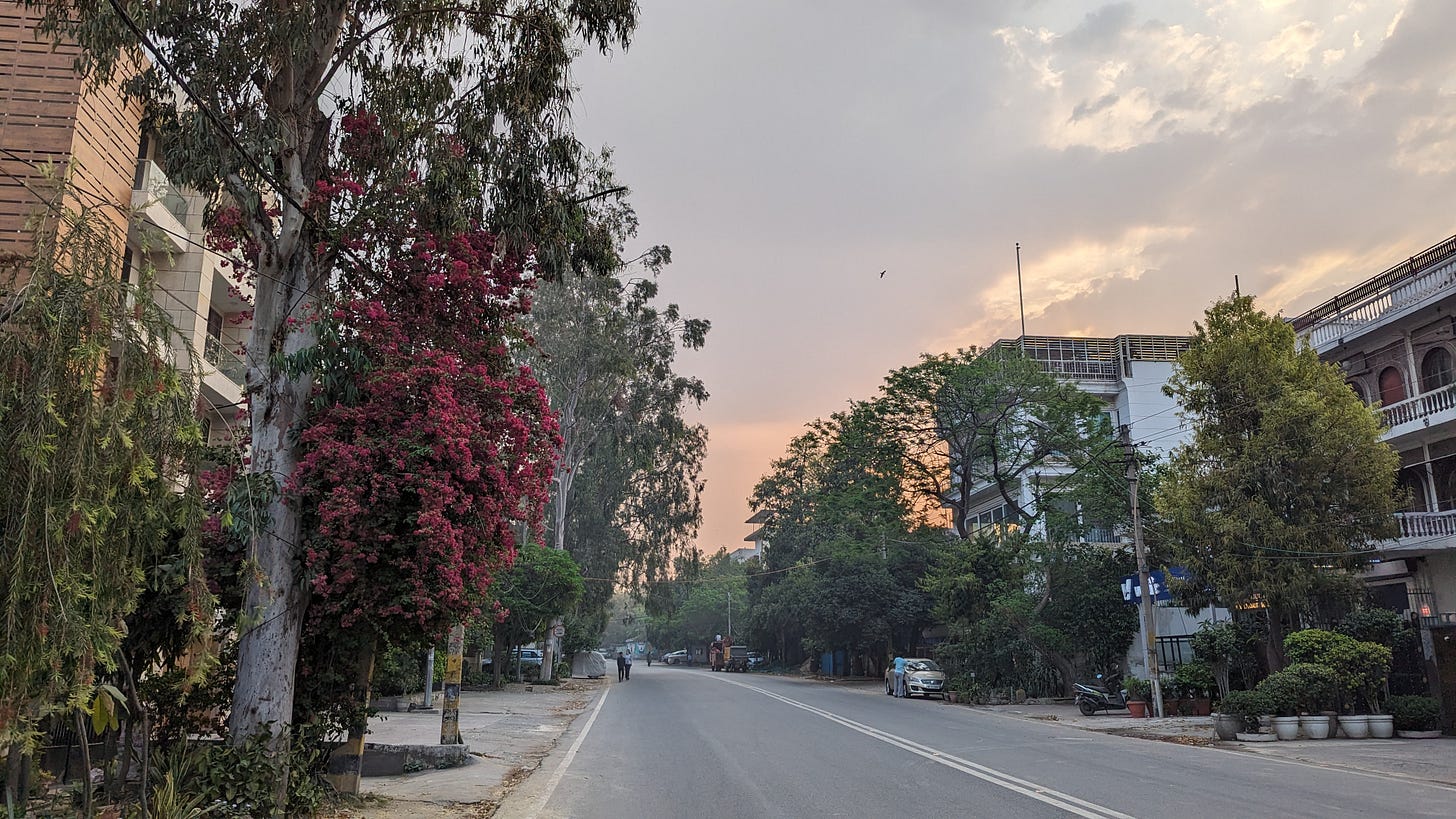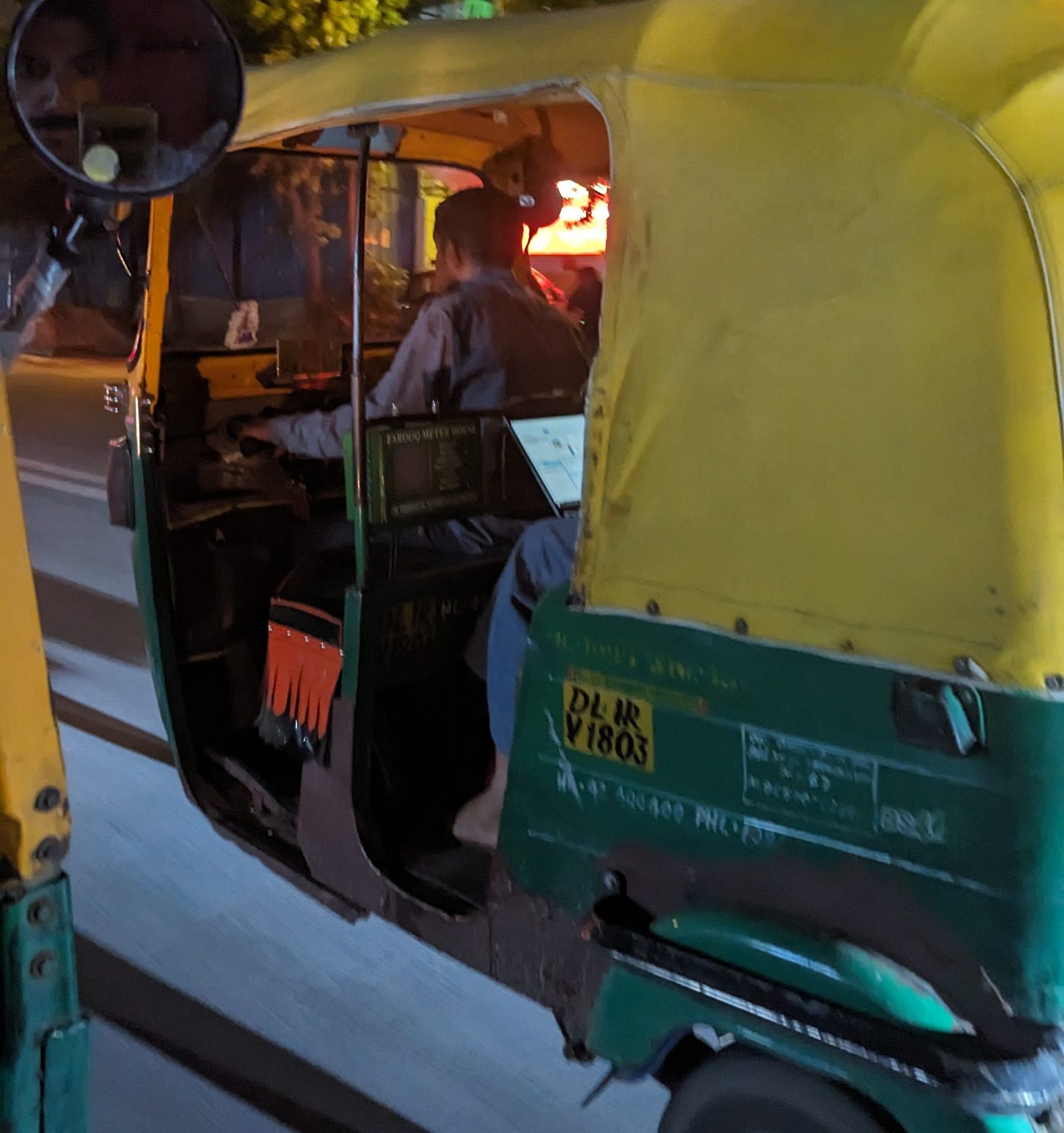This week I’m going to do something a little different.
Since being in India I have been trying my best to embrace the mindset of a cultural relativist when it comes to most things. To be a cultural relativist is to “determine whether an action is 'right' or 'wrong' by evaluating it according to the ethical standards of the society within which the action occurs”. To be a cultural relativist is as opposed to being a universalist (see: Western ethnocentrist) or someone who believes that actions are either correct or incorrect based on a universal set of principles or tenants that must be held true.
When it comes to India I would (precociously) identify as a soft-cultural relativist. Meaning that I will tolerate the happenings and eccentricities of India and its people … at least to an extent.
With that in mind, for the next two weeks I would like to introduce my new miniseries: the top 5 things I am a cultural relativist about, from most to least.
☕☕☕☕☕-Indian Hakuna Matata
The chalta hai (or ‘everything goes’/ ‘anything goes’) attitude is the Indian equivalent of hakuna matata. It is the mantra of the excessively casual and easy going. It is the life blood of India and is definitely something I am willing to be a full-throated cultural relativist about.
The concept stretches in use from people saying “chalta hai” as a response to accept any audacious request you may make of them (e.g., can I bring my goat in this Uber) all the way through to the utterance of a man standing with his hands on his hips watching some form of unmitigated disaster unfold (e.g., Gordian knots traffic flows). In India, the sociological coping mechanism is to simply remark “chalta hai”.
Such attitude is in fact so pervasive that it permeates into the tone of the Hindi language. It does not even need to be said out loud in order for one to understand that the “chalta hai” is implied in a sentence. For instance, on Saturday evening, while bartering with an Auto Rickshaw-wala, James and I quoted the fact that we would be able to take an airconditioned Uber for 250 rupees and so he as an Auto rickshaw driver should surely charge us less than that. He came back with a counter offer of 300 rupees. I insisted that we could have an A/C journey home for less. He replied, “Sir, mere auto mai ‘Natural Airconditioning’ hoti hai” [In my tuk tuk, I have natural airconditioning]. In other words, “chalta hai”.
☕☕☕☕-Staying in your lane
Speaking of western ethnocentrism, a friend once told me of an ex-French Ambassador to India who remarked to a group of international students that he believes that India will only be a “developed country” when people start using traffic lanes while driving on the road. Currently in India, not even a modicum of attention is paid to the puny little lines painted on the road, and I love it. I am willing to be a 4/5 chai cultural relativist about this fact.
It is peak coloniser-brain to think that the metric by which the economic prosperity of a people should be adjudicated is the degree to which they follow markings on the ground. Those too, conceived for use in car dominated societies. India’s roads have not and will likely never be populated by one homogenous vehicle type and so the belief that all vehicles regardless of speed, acceleration, weight, handling and traction is pure fantasy.[1]
When you are sharing a road with anything between the vehicle class of bicycle to tractor to tuktuk to man-with-a-stick-and-goatherd, you make do with what you can. Instead of abiding by stagnant lines etched in asphalt by our colonial forbears, Indians duck and weave between traffic masterfully employing the echo-location system that is “honking” to navigate the busy roads. With regards to this topic, I think we should live and let live, traffic lanes are as good as useless. I also say, Mr ex-French Ambassador, decolonise your mind.
[1] All also Mario Kart kart spec categories
☕☕☕-The IPL
This is the first topic that starts making my western ethnocentric, and perhaps even my political centrist (this is a joke) nerves twitch. The Indian Premier League is the premiere cricketing tournament in the world and is currently being played all around India. It is also the reason that cricket has been ruined forever. Cricketing administrators in India in the mid-2000s made the Faustian bargain to trade away guile, class and elegant stroke-play for the saccharine hedonistic blood rush of more sixes, more louder, now.
The IPL is obviously a uniquely Indian product created for the Indian domestic cricket market, who consume cricket with the same intensity and rate that your average uncle consumes biscuits with his afternoon chai. The tournament is a complete bastardisation of the sport with each game reduced to game of ‘who can hit the ball the furthest the most times’.
The fact that the IPL has devolved into this is no coincidence, rather I imagine there is some kind of complex econometric calculation that has determined that bigger and more ostentatious hitting = more eyeballs = more advertising revenue = shareholder value.
The only redeeming quality of the otherwise meretricious IPL is that if you can detach any sentimental attachment you may have to the longevity of international cricket and just let the product wash over you it is a pretty incredible spectacle. For this reason, it gets a rating of 3-chais on how accepting I am of this as a cultural difference.
☕☕-Time elasticity
India’s time zone[2] is listed as IST, or Indian Standard Time. This is often hilariously co-opted by small-talk havers at not-yet-well-attended parties all over the world to describe the fact that Indians run late, as in, they run on Indian Standard Time (or if feeling particularly zany, ‘Indian Stretchable Time’). At the core of every stereotype is a kernel of truth,[3] and I am here to report that time as a concept is in fact largely immaterial to most of this country’s inhabitants.
The inner raging universalist is really irritated by this fact.
People are ruthlessly late here like it is a blood sport. As noted in the previous edition, the office I was completing an internship at would expect people to come in somewhere around 10, which most people took as an invitation to arrive at 11:05. Opening hours for any commercial establishment are a rough estimate at best. Often if you invite people for lunch, don’t expect them before 2, and don’t expect anyone to be hungry before 3:30pm.
People are so regularly and consistently late here that you cannot even attach any subjective malintent behind their lateness, you simply have to accept it as a fact of life. That aside, lateness makes every day substantially less efficient, but then again maybe that’s the western ethno-supremacist in me showing.
The only saving grace of time-elasticity is the fact that almost all buffer times are either created or serviced by a cup of chai. No matter how late you are, there’s always time for a cup of chai and no matter how long you have to wait, you will always be kept company by a cup of chai. There is always time for chai.

[2] Though I do think timezones should be abolished, that is a conversation for another time.
[3] Not true at all, just felt good to say it
☕-Honourific Language
The aspect of Indian culture that I am least willing to be a cultural relativist on is the yawning divide that exists between the rich and the poor in India, and the way that people who are wealthy talk to people who are not wealthy.
Built into Hindi is a system of honourific levels which indicate the relative status (or perceived relative status) of the speakers in a conversation. For instance, if I believe you are to be respected, then the way I would formulate any sentence to you is different to if I believed you are not to be respected. This system often results in a very audible indication of status or class in any conversation.
Though obviously the language is the language, and there is no choice but to be a relativist when it comes to the way it is spoken, it often really irks me to hear people who think highly of themselves contemptuously speaking to someone who is serving them – be it in a restaurant, at a ticket booth or as a cleaner or cook.
The use of this language absolutely results in the belief within much of the culture that there is an inherent hierarchy to their lives. That some people are less deserving of respect than others, and that that is a judgement you can make based off of their profession, appearance, or even their last name. 1/5 Chais.





I created a caste system for my friends but instead of separating people it by wealth I separated it by who I liked the most
Nepal seems to have solved the traffic lane problem: I am yet to observe a lane marking. 🙂